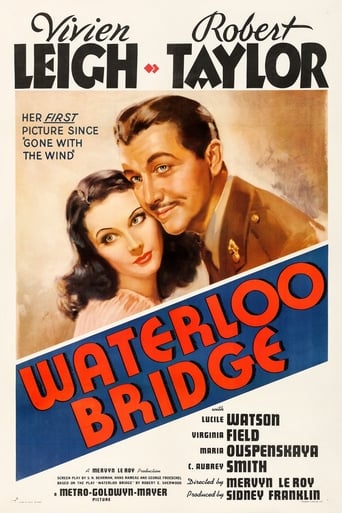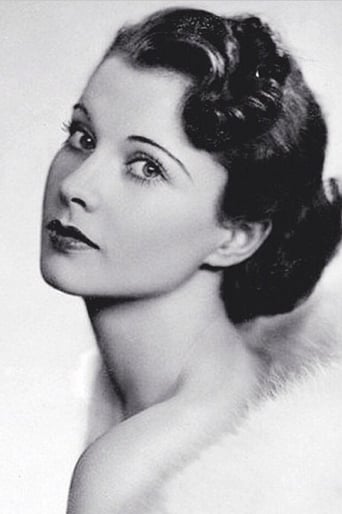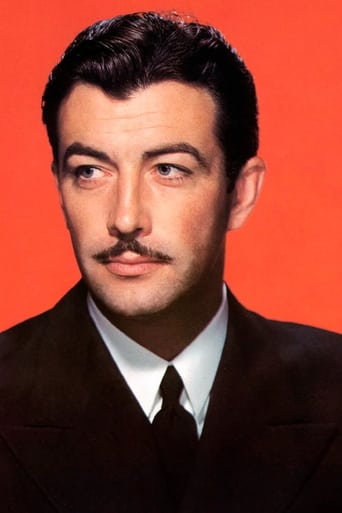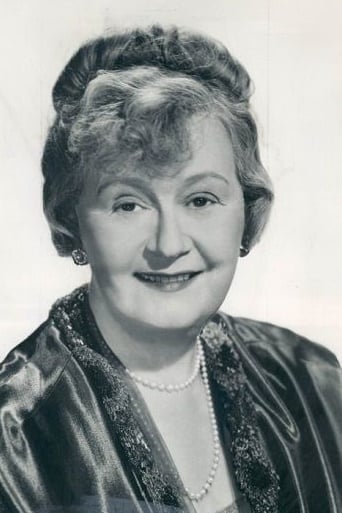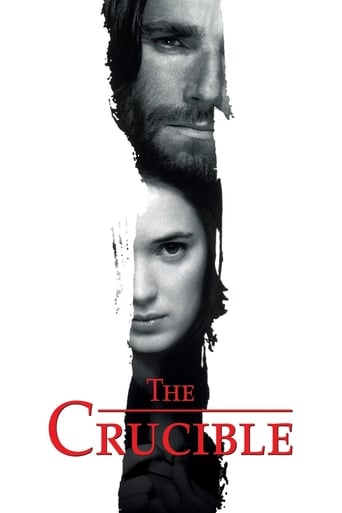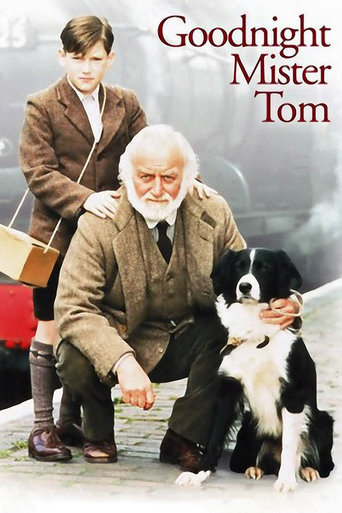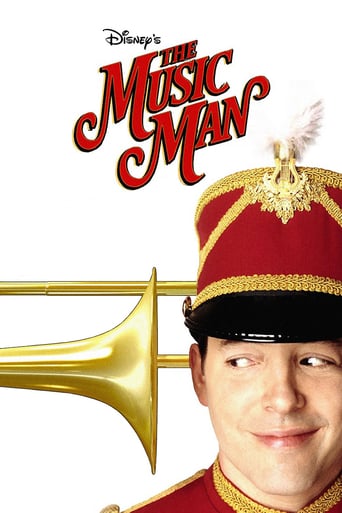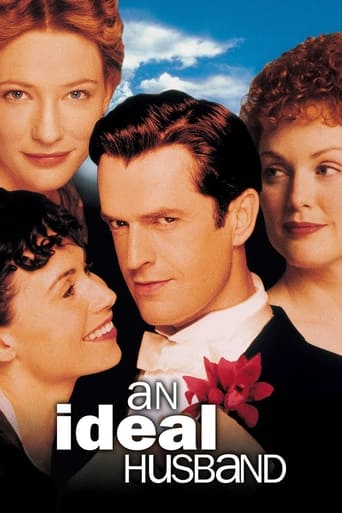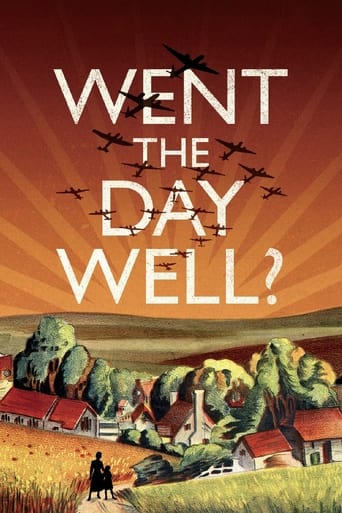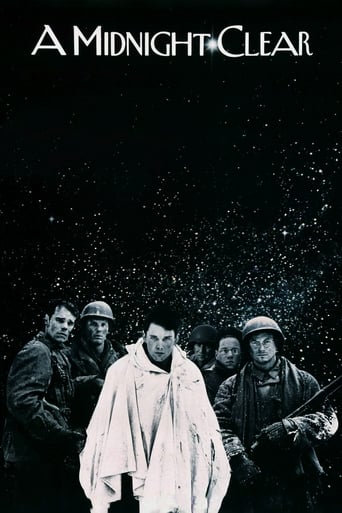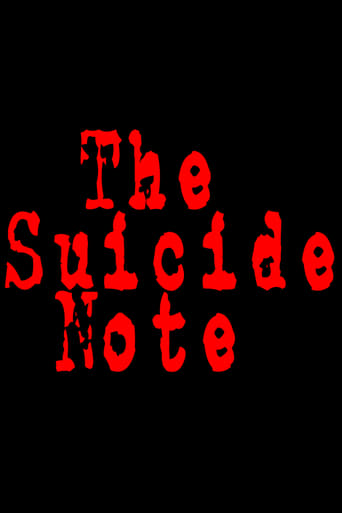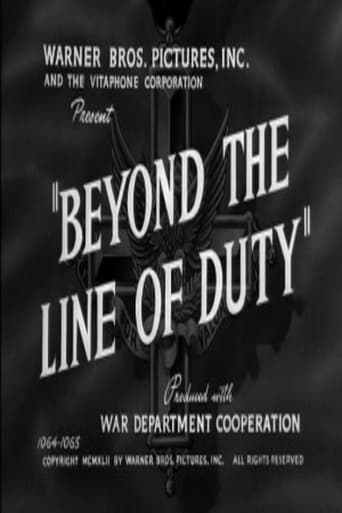Waterloo Bridge (1940)
On the eve of World War II, a British officer revisits Waterloo Bridge and recalls the young man he was at the beginning of World War I and the young ballerina he met just before he left for the front. Myra stayed with him past curfew and is thrown out of the corps de ballet. She survives on the streets of London, falling even lower after she hears her true love has been killed in action. But he wasn't killed. Those terrible years were nothing more than a bad dream is Myra's hope after Roy finds her and takes her to his family's country estate.
Watch Trailer
Free Trial Channels
Cast


Similar titles
Reviews
Amateur movie with Big budget
I wanted to like it more than I actually did... But much of the humor totally escaped me and I walked out only mildly impressed.
an ambitious but ultimately ineffective debut endeavor.
If you like to be scared, if you like to laugh, and if you like to learn a thing or two at the movies, this absolutely cannot be missed.
I watched this film on the recommendation of a friend and wasn't disappointed. Although the main action is told in an extended flashback set in civilian life during the First World War, the bookending of the movie with Robert Taylor's middle-aged army colonel's long reminiscence on Waterloo Bridge of the love of his life is set in present day 1939 just after the outbreak of World War 2, making it one of the first films reflecting the new, even more devastating conflict. That said seeing the characters in contemporary clothing and hair-styles you might be forgiven for thinking it is a WW2 movie but one shouldn't forget the likely underlying aim of the film to interest and influence the watching American public on the side of the British as they initially stood almost alone against the German Army so perhaps the familiarity engendered was deliberate.There is no military action in the film however although the fact of Taylor's Captain Roy Cronin being an army officer does otherwise play a big part in proceedings, as it's a bomb raid which first throws he and Vivian Leigh's ballet dancer Myra together where they immediately spark and fall in love. Their whirlwind romance sees him attempt to marry her before he's posted overseas in two days only to be thwarted in this by his posting being brought forward a day. An unforeseen consequence of this is that Leigh loses her placing with the ballet corps which employs her, falling foul of the tyrannical old Madame who runs the company for missing a performance by rushing elsewhere to see Taylor off. Although she's accompanied in this departure by her rebellious friend and fellow-dancer Kitty (played by Virginia Field) who resigns herself in support of Leigh, when they find no work elsewhere for either of them, they resort to the oldest profession to survive, becoming streetwalkers, ironically to services personnel. Sure the plotting is highly melodramatic and the ending despairingly sad, but with two excellent star turns, fine supporting work by the rest of the well chosen cast and polished direction by Mervin Le Roy it's a very satisfying entertainment and must have been even more so to its original wartime audience.I've occasionally let my perception of Robert Taylor be clouded by the unsavoury part he played during the Communist witch hunt in Hollywood immediately after the war ended but he's undoubtedly handsome, charming and sincere here while the camera which so loved Leigh in the glorious technicolour of the immediately preceding "Gone With The Wind" continues its affair with her here in black and white. She really did have a most expressive face as we see her character run the gamut of emotions as her fortunes rise and fade time and again.Most impressive for me though was the skill with which it was directed by Mervin Le Roy. As well as helping the film leave behind its theatrical origins and keeping the occasionally improbable narrative going, there are lovely touches of flair exhibited which had me purring with pleasure. Some examples would be the dolly shot which picks out Taylor from the crowd at the train station, another high tracking shot of the pair dancing away from the crowd at a party to a private balcony, the dramatic focus on Leigh's face as she makes her fateful choice on Waterloo Bridge (I wonder if Hitchcock remembered it for Grace Kelly's trial scene in "Dial M for Murder") and the couple's first rapturous, silent dance together by candlelight. There's even a very modern shot with a double close up of Field and Leigh with the one in the foreground out of focus.All in all, a really fine film the like of which as the cliche has it, they don't make anymore.
"Waterloo Bridge" started life as a stage-play; this is the second of three cinematic adaptations. (The others are a 1931 film, also called "Waterloo Bridge", and "Gaby" from 1956). The film opens on 3rd September 1939, the day World War II broke out. Roy Cronin, a senior officer in the British Army, is travelling to France to join his regiment. He briefly stops on Waterloo Bridge to reminisce about his experiences during the First World War, and the rest of the story is told in flashback. His memories, however, are not of the actual fighting but of his romance with a beautiful ballerina named Myra Lester whom he first met on the bridge. The two plan to marry, but are prevented from doing so by circumstances. Myra loses her job with the ballet company whose formidable director, Madame Olga Kirowa, objects to her relationship with Roy. (Her surname was presumably chosen to suggest an association with the famous Kirov Ballet, although the ballet did not acquire that name, that of an assassinated Soviet politician, until 1934). Believing- wrongly- that Roy has been killed in action, and unable to find alternative employment, Myra and her friend Kitty descend into prostitution to prevent themselves from starving.Yes, you heard right. Prostitution. And that in the heyday of the Production Code. I have never seen the 1931 version of this story, but understand that it dealt with the subject much more frankly and as a result was banned in America after the Code came into force. It is therefore surprising that MGM could get away with making a remake, although the subject is dealt with very cautiously. (As Dr Johnson said of a dog walking on its hind legs, it is not done well, but one is surprised to see it done at all). The dreaded p-word is never actually uttered, and the dubious nature of Myra and Kitty's method of earning a living is conveyed only by euphemism and innuendo. Nevertheless, the audience is left in no doubt that the two are what would have been called, in the language of the day, "fallen women".Which leads us to the film's greatest plot-hole. The screenwriters were doubtless influenced by memories of the "hungry thirties" when many women may well have faced the unenviable choice which confronts Myra and Kitty. As others have pointed out, however, economic conditions in 1917/18 were very different. Even if Myra and Kitty could not find work as dancers (and there must have been many West End shows catering for soldiers on leave), there were a great number of other jobs available to women, either in work directly related to the war effort (nursing, munitions), or in industries left desperately short of labour by the exodus of men to join the Forces. The film's central premise, therefore, just does not ring true. The "extended flashback" structure also struck me as a mistake because it means that the viewer is aware, from the very beginning of the film, that Roy survives the war and therefore knows that the report of his death must be erroneous. It might have made for greater emotional impact if we had been allowed to believe, with Myra, that Roy has died.The film's other main weakness is the miscasting of Robert Taylor as Roy. (Vivien Leigh would have preferred her husband Laurence Olivier as her leading man, but was overruled). When the film began I wondered why Roy had an American accent and two possibilities occurred to me, besides the obvious one that Taylor did not want to attempt a British one. The first was that Roy was a Canadian, the second that he was an American who had volunteered for the British Army before America's entry into the war and had subsequently acquired British nationality. Neither, however, turned out to be correct. It transpires that he is actually a member of an aristocratic Scottish family, and as such Taylor seems completely unconvincing. Had the script been rewritten to make him an American he might have been quite good.On the positive side, Leigh is heartbreakingly beautiful. (This was her first film after "Gone with the Wind"). The film was a box-office success when first released, and her popularity must have played a major part in this. Her role may have been badly written, but she plays it with great sincerity and enables the viewer to empathise with Myra. I would say that she is the best thing about the film, although there are also good contributions in smaller roles from Maria Ouspenskaya as Kirowa and C. Aubrey Smith as Roy's elderly uncle. Overall, however, "Waterloo Bridge" is a film which does not hold up well today, partly because this sort of sentimental melodrama has gone out of fashion, partly because of its own weaknesses in plot and casting. It is hard to understand why both Leigh and Taylor considered it a personal favourite; both acted in much better films than this. 5/10Some goofs. The church where Roy and Myra hope to marry appears as a vast Gothic cathedral from the outside and as a modest chapel in the Classical style from the inside. We learn that the badge of Roy's regiment (the fictitious Rendleshire Fusiliers) is a broken lance, but he wears a different badge on his cap, the flaming grenade of the Grenadier Guards. The style of his uniform looks more American than British, and other British soldiers, even in scenes set at the end of the war in 1918, are seen wearing the uniforms of 1914/15, with peaked caps rather than helmets. The list of officers killed in action is headed by a Gunner; the term "Gunner" in the British Army refers to a private solider in the artillery, not to an officer. And why are Myra and the other female characters all dressed in the fashions of 1940, even though the action takes place more than twenty years earlier?
Robert Taylor (Roy) asks his taxi driver to stop at Waterloo Bridge on his way to enlist for WW2. There, he pulls out a lucky charm and reminisces about his whirlwind romance with Vivien Leigh (Myra) during WW1. The bridge is significant as it is the location that they met during an air raid. It is also the location where tragedy struck This is a romantic war story that does leave you with some memorable moments, eg, the singing of "Auld Lang Syne" as couples dance the Farewell Waltz. The orchestra plays and gradually extinguishes more and more candles until we are left with dark silhouettes dancing. There is no dialogue and the whole sequence is hauntingly romantic. The film is well directed, eg, the scene where Leigh waits for her encounter with Taylor's mother Lucile Watson ((Lady Margaret). She has a newspaper with an update of the names of those soldiers who have fallen. Dare she look? Vivien Leigh evolves from ballerina good girl to prostitute and it's unfortunate that shame plays such an important part in this film. I used to know someone who worked as a high-class escort girl, ie, prostitute, and she raked in the cash for doing very little. One of her customers liked to get all his Nazi memorabilia out including books and toy tanks and ask her to watch him while he masturbated over it. That was it - £500, thank you very much. Leigh could have made a financial killing in the wartime with customers like that.The supporting cast are all excellent with standout performances from ballet company director Maria Ouspenskaya (Madame Olga) and Vivien's friend Virginia Field (Kitty). I'm not sure that the story is entirely realistic as Robert Taylor wouldn't be smiling over his reminiscences. It feels like it's all water under the bridge to him. The film has a rather 'Anna Karenina' ending to proceedings.
Very romantic film with fine actors. Robert Taylor is quite American, but it seems that Hollywood intentionally used Americans in films that were supposed to have all (or nearly all) British characters so that American audiences would not find the films too 'foreign.' Some of the supporting characters in Frank Capra's 1936 "Lost Horizon" come to mind, for instance. While Robert Taylor is of ideal stature and appearance in "Waterloo Bridge", a British actor like Ronald Colman would have been a better fit (though he was beginning to get on in years by 1940). Colman did appear in Mervyn LeRoy's "Random Harvest" two years later, and, interestingly, the haunting music of "Swan Lake" makes its way into that film, too. Vivien Leigh does not even seem to be acting in "Waterloo Bridge". It is as if she and the role were one, which is a supreme compliment to an actor. And it is always a pleasure to see a veteran character actor like C. Aubrey Smith, usually cast as blustery (but lovable) curmudgeons---retired generals and the like.

